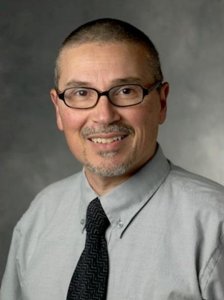Presented By: Michigan Institute for Plasma Science and Engineering (MIPSE)
MIPSE Seminar | Emerging Research Topics in Plasma Science: Plasma-control of Electromagnetic Waves and High Energy Density Plasma Jets and Their Interactions
Prof. Mark Cappelli, Stanford University

This presentation will focus on two emerging areas of plasma science research at Stanford. The first part of will provide an overview of recent work at Stanford and of a Stanford-led multi-university effort on the integration of plasmas into metamaterials and photonic crystals for the control of electromagnetic waves in the centimeter – millimeter range of the spectrum. Plasmas, because of their unusual dielectric constant, provide a means of reconfiguring otherwise passive microwave photonic and plasmonic devices that are used to filter, switch, or redirect electromagnetic waves. The second part will focus on recent studies of high energy density plasmas and the formation of hypervelocity plasma jets of extreme density (1018 cm-3) and temperature (50-100 eV). The interactions of these jets with surfaces generate an extreme heat flux (>10 GW/m2) and can serve as simulators of disruptions that occur in magnetic confinement fusion reactors. We will describe efforts at characterizing the jet structure including first videography of unsteady dynamics, and also recent measurements of surface heat deposition rates.
Mark A. Cappelli is a Professor of Mechanical Engineering at Stanford University, and co-Director of the Engineering Physics Major. He received his B.Sc. degree in Physics from McGill University, and his M.A.Sc. and Ph.D. from the University of Toronto in Aerospace Sciences. The focus of his Ph.D. dissertation involved the formation of high density plasma channels to facilitate the propagation of ion beams to targets in light-ion beam fusion. He joined the Stanford faculty in 1987. At Stanford, he has studied the applications of plasmas to space propulsion, materials synthesis and processing, combustion, aerodynamics, and most recently, to the control of electromagnetic waves.
The seminar will be web-simulcast. To view the simulcast, please follow this link:
https://mipse.my.webex.com/mipse.my/j.php?MTID=m76c8ad745d3dc7c85f690b71c96ea453
Password: MIPSE
Meeting number/Access code: 624 958 992
Audio connection through phone: (510) 338-9438
Mark A. Cappelli is a Professor of Mechanical Engineering at Stanford University, and co-Director of the Engineering Physics Major. He received his B.Sc. degree in Physics from McGill University, and his M.A.Sc. and Ph.D. from the University of Toronto in Aerospace Sciences. The focus of his Ph.D. dissertation involved the formation of high density plasma channels to facilitate the propagation of ion beams to targets in light-ion beam fusion. He joined the Stanford faculty in 1987. At Stanford, he has studied the applications of plasmas to space propulsion, materials synthesis and processing, combustion, aerodynamics, and most recently, to the control of electromagnetic waves.
The seminar will be web-simulcast. To view the simulcast, please follow this link:
https://mipse.my.webex.com/mipse.my/j.php?MTID=m76c8ad745d3dc7c85f690b71c96ea453
Password: MIPSE
Meeting number/Access code: 624 958 992
Audio connection through phone: (510) 338-9438